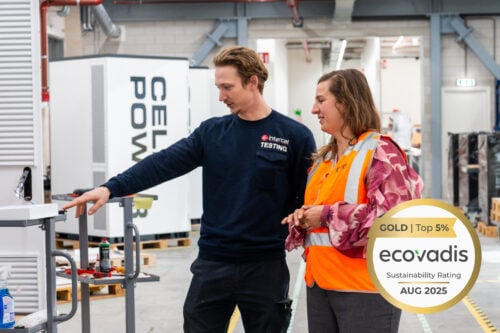When choosing an energy storage system, there are several concerns to consider. Important factors include security, energy density, lifetime, cost, integration into existing infrastructure, environmental impact and scalability of the system. In addition, it is essential to consider compatibility with existing energy sources and the maintenance required by the system. By thoroughly evaluating all these aspects, you can make an informed choice that fits your energy needs and sustainability goals.
Safety
The safety of energy storage systems is a critical consideration in the design process. This includes preventing fire, overload, over-discharge, short circuit, and protecting the safety of the system and the environment in unexpected situations. An ideal system has the UL9540A certification and must meet at least the PGS 37.1 standard.
Energy density and power density
Energy density refers to the ability of an energy storage system to store energy, usually in units of kWh/kg or kWh/L or kWh/m2. Power density is the rate at which the system releases or absorbs energy. When choosing an energy storage system, the two must be balanced to meet the needs of specific applications such as peak shaving and load balancing.
Lifetime
The lifetime of an energy storage system refers to the number of charge and discharge cycles it can undergo. This is critical to long-term return on investment. A high lifespan means a more durable system, lower maintenance costs and greater economic viability. Here, it is important to consider what a system does after 5,000 discharges at 90% at 25 degrees Celsius.
Cost-benefit analysis
When designing an energy storage system, it is helpful to conduct a cost-benefit analysis. This includes consideration of factors such as equipment costs, installation and maintenance costs, energy efficiency and system life to ensure feasibility and return on investment. Here, the price in €/kWh is an important aspect.
Integration and control
Energy storage systems usually need to be integrated with other energy equipment in an existing infrastructure and require an effective control system (EMS) for optimal operation. The design phase should consider how to achieve seamless system integration and formulate and select appropriate control strategies.
Environmental impact
When purchasing an energy storage system, environmental impacts must be considered, including the collection of raw materials, the manufacturing process, transportation, the use phase and waste disposal. Sustainability and environmental protection are essential factors that should not be ignored in design.
Future scalability
Given the rapid development and technological advances, as well as the growing problem of grid congestion, the scalability of energy storage systems must be considered in procurement.
The system must be flexible and adaptable to future needs and technological changes.
Energy storage systems will become increasingly important in today’s energy landscape, and understanding the details above is the first step to successful implementation.
Unsure if an energy storage system is an appropriate option in your situation?
Ask your question via the contact form and we will get back to you as soon as possible to discuss your situation.




